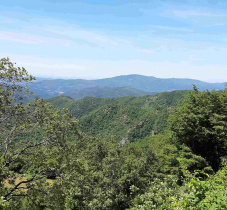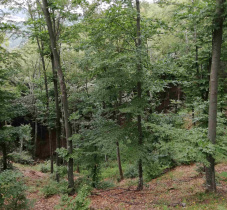Project description
Help the owner of these plots to regenerate, enrich, preserve and diversify this forest in the province of Arezzo in Italy!
The project at a glance
- Number of trees to be financed: 122,145
- Area of the operation: 80.88 hectares
- Main species promoted: beech, sessile oak, pedunculate oak, hairy oak, chestnut
- Type of project: support for natural regeneration and massif enrichment
Context
The 22 plots lie in a forest located in a vast national park known for the diversity of its mountain and low mountain vegetation. Indeed, 48 varieties of trees and more than 1000 herbaceous species grow in the area. Currently, the stands concerned are lacking diversity. Because of this management method, the plots are essentially composed of dense coppice, resulting from stump sprouting.
In order to support the natural regeneration of the massif, sylviculture operations are undertaken to convert it into a high, layered and perennial forest. After thinning and pruning, the stand will be enriched with new species, by 2022-2023. This diversification will strengthen the forest and provide habitat for the local diversity. Eventually, the massif will be able to supply the region with sustainable timber and ensure the durability of its ecosystem services.
Generated benefits
-
Fight against climate change: trees provide fruit, fodder, wood, resins, tannins etc. Once planted, they regulate temperatures through the shade of their foliage. Carbon sinks, they store CO₂ and are valuable allies in the fight against global warming. They restore soil fertility and prevent soil erosion.
-
Development of biodiversity: agroforestry promotes biodiversity and provides multiple habitats and species. Micro-organisms, fauna, and flora participate in the restoration of an ecological network. They provide refuges for birds that regulate pest populations on crops.
-
Protection of territories: the planting of trees in agroforestry helps to protect the land from extreme weather events. By creating shaded areas, the trees preserve the crops during the dry season and provide them with a protective cover during the rainy season.
-
Soil enrichment: the leaves fallen from the trees will allow the creation of organic matter that will enrich the soils and contribute to the proper functioning of the forest ecosystem.
-
Wood supply: eventually, some mature trees may be harvested to supply the timber industry, economic lung that needs to operate a sustainable energy transition.
-
Soil nutrition: trees retain rainwater on the soil surface and filter it before it enters the water table. Thus, forest canopies regulate the water cycle and help preserve the planet's water resources.






